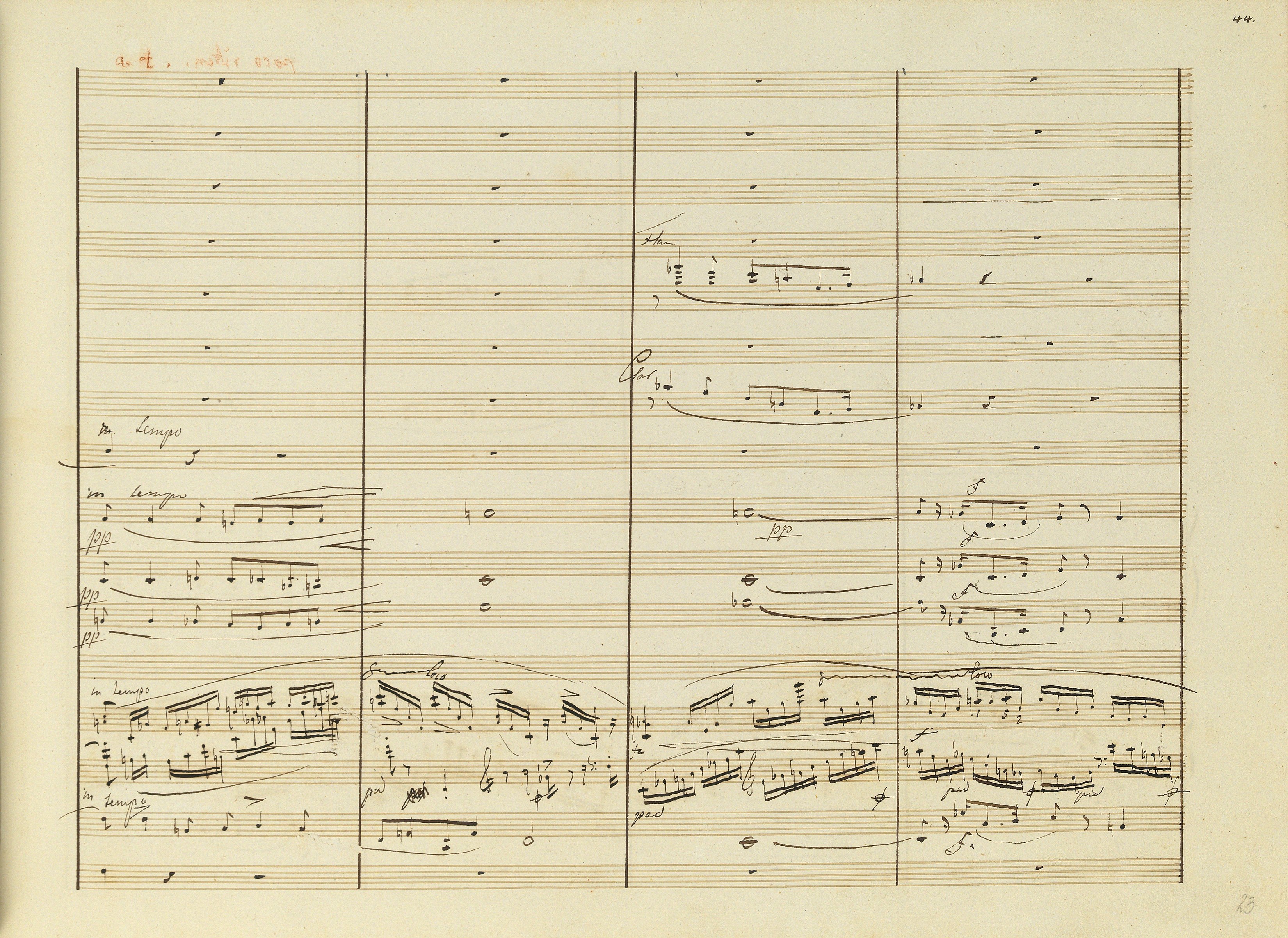



Chopin pedal markings can be difficult to place, since the composer would often add them in haste, hence – inaccurately. Moreover, the signs are quite wide (particularly  ), which raises doubts about which part of the sign marks the moment of pressing or releasing the pedal – the beginning, middle or end. There are also situations in which an entire sign is before the note it applies to, e.g. in bar 226. In the discussed bar, both signs are written in each half of the bar under the 3rd and 4th semiquavers. Assuming that Chopin wanted to hold with pedal a possibly full and clear sound of the diminished chord, without transition notes, we give the
), which raises doubts about which part of the sign marks the moment of pressing or releasing the pedal – the beginning, middle or end. There are also situations in which an entire sign is before the note it applies to, e.g. in bar 226. In the discussed bar, both signs are written in each half of the bar under the 3rd and 4th semiquavers. Assuming that Chopin wanted to hold with pedal a possibly full and clear sound of the diminished chord, without transition notes, we give the  signs under the 3rd semiquaver (among the first editions only GE2 has such a pedalling).
signs under the 3rd semiquaver (among the first editions only GE2 has such a pedalling).
In GE1 (→FE) only the first  sign was reproduced like this; the second pedal embraces only the last group of semiquavers. EE has half-bar pedals, which is a totally arbitrary version and certainly incompatible with Chopin's intention.
sign was reproduced like this; the second pedal embraces only the last group of semiquavers. EE has half-bar pedals, which is a totally arbitrary version and certainly incompatible with Chopin's intention.
Compare the passage in the sources »
category imprint: Graphic ambiguousness; Differences between sources
issues: EE revisions, Inaccuracies in GE, Inaccuracies in A
notation: Pedalling




